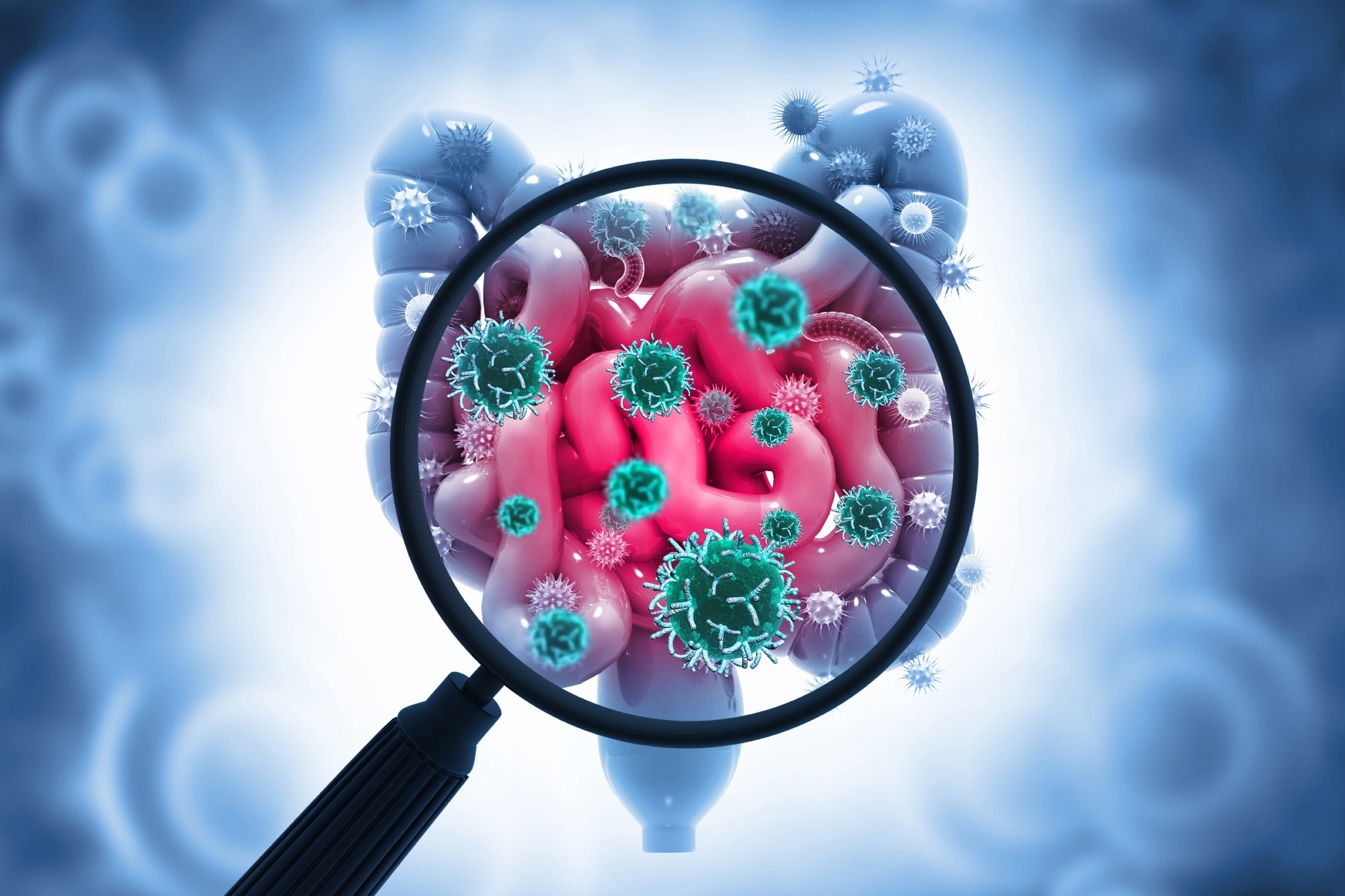A global research team has pinpointed the enzyme fueling hydrogen production in healthy guts and shown how its depletion rewires microbial energy networks in Crohn’s disease, reshaping our understanding of gut metabolism.

Study: A widespread hydrogenase supports fermentative growth of gut bacteria in healthy people. Image Credit: crystal light / Shutterstock
In a recent study published in the journal Nature Microbiology, an international team of researchers leveraged a multifaceted study combining genomic, transcriptomic, and biochemical analyses to identify the primary driver of fermentative molecular hydrogen (H₂) production in healthy individuals. Molecular H₂ cycling is a vital metabolic process in the human gut, but the specific microbes and enzymes responsible for it remain unresolved.
Background
Decades of research have established that the human gut microbiome is a bustling metabolic reactor, comprising trillions of microbes that ferment consumed carbohydrates. This process results in the production of energy, beneficial short-chain fatty acids, and vast quantities of gases, including molecular hydrogen (H₂).
Conventionally considered a simple waste product, more recent research has revealed that molecular H₂ is a crucial food source for other microbes (known as “hydrogenotrophs”), thereby making fermentation thermodynamically more favourable.
Dysbiosis or imbalances in H₂ production and consumption are increasingly associated with serious health issues, from the gas buildup in irritable bowel syndrome (IBS) to infections and even gastrointestinal cancers. Furthermore, some pathogens, like Salmonella, have been observed to “hijack” molecular H₂ to fuel their invasion of the gut.
Unfortunately, despite its importance, the microbes and specific enzymes involved in H₂ production and metabolism remain unresolved.
About the Study
The present study aims to address this knowledge gap and inform future research and gastrointestinal interventions by leveraging a multi-pronged approach to elucidate the microbes and enzymes involved in H₂ production from the ecosystem level down to the single enzyme.
The study comprised several sequential steps: First, a large-scale computational analysis of 300 stool metagenomes and 78 metatranscriptomes was carried out to elucidate the full spectrum of hydrogen-related genes present and active in the healthy human gut. These findings were validated using 102 mucosal biopsy-enriched metagenomes from 42 donors. Furthermore, analyses focused on samples from the terminal ileum, caecum, and rectum to confirm consistency across gut regions.
Next, to demonstrate that these genes were functional, the study selected 19 diverse bacterial species from the human gut and grew them under anaerobic (oxygen-free) conditions to simulate gut conditions. Gas chromatography assays were used to precisely measure the amount of H₂ gas produced by each bacterial isolate over time.
Finally, biochemical assays (on bacterial cell extracts) were carried out to elucidate the link between H₂ production and pyruvate:ferredoxin oxidoreductase (PFOR) reaction, a core part of fermentation. Specifically, PFOR substrates (pyruvate and CoA) and inhibitors were added to see how H₂ levels responded, supported by AlphaFold2 modelling, heterologous expression, and spectroscopy/EPR evidence that validated the enzyme’s ferredoxin-like domain and catalytic function.
Study Findings
Study findings revealed, for the first time, that the group B [FeFe]-hydrogenase enzyme was, by far, the most dominant hydrogen-producing gene in the healthy human gut. Abundance estimates found that group B genes were on average 0.75 ± 0.25 copies per genome, about 7.5 times more abundant than the group A1 enzyme (0.10 ± 0.09 copies), which was previously thought to be the leading H₂ producer.
Activity assays supported these findings, showing that group B genes were also the most highly transcribed (active) in the metatranscriptome. Unexpectedly, however, activity assays revealed Bacteroides, one of the most common genera in the gut, as a primary user of group B enzymes and thus a major H₂ producer, a previously under-recognized association.
Analyses of the 19 bacterial isolates confirmed these findings, demonstrating that species encoding the group B gene, including seven different Bacteroides isolates, produced high levels of H₂ gas. In contrast, Bacteroides stercoris, a species that naturally lacks any hydrogenase genes, was observed to produce no H₂, consistent with the absence of detectable hydrogenase genes.
Most significantly, comparing healthy individuals to 46 patients with CD revealed that the “healthy” group B hydrogenase was significantly depleted (P = 0.0023) and notably replaced by other enzymes: the group A1 hydrogenase increased 2.8-fold (P = 6.6 × 10⁻⁷), the group 4a formate hydrogenlyase (often found in E. coli) increased 5.2-fold (P = 6.8 × 10⁻⁶), and the group 1d [NiFe]-hydrogenase increased 2.6-fold (P = 3.8 × 10⁻⁵). Genes for respiratory H₂ oxidation, particularly group 1d [NiFe]-hydrogenases, also increased, supporting a restructured hydrogen economy in the inflamed gut of CD patients.
Expression also varied markedly between individuals, and the combined [FeFe] subgroups were not significantly different between CD and control samples, underscoring that these associations are correlative and require further mechanistic study. Respiratory hydrogenotrophs likely dominate gut H₂ consumption, based on gene abundance and transcription data, though activity-level validation is still needed.
Conclusions
The present study refines and consolidates scientific understanding of a fundamental metabolic process in the human gut, identifying the group B [FeFe]-hydrogenase as the primary driver of fermentative H₂ production in healthy individuals and elevating the Bacteroides genus to a key player.
This discovery opens new avenues for understanding, diagnosing, and potentially treating complex inflammatory gut disorders by leveraging interventions targeting the gut microbiome. It also suggests that respiratory hydrogenotrophs are major consumers of H₂, underscoring the complexity of microbial energy flow in the gut ecosystem.
Journal reference:
- Welsh, C., Cabotaje, P. R., Marcelino, V. R., Watts, T. D., Kountz, D. J., Jespersen, M., Gould, J. A., Doan, N. Q., Lingford, J. P., Koralegedara, T., Solari, J., D’Adamo, G. L., Huang, P., Bong, N., Gulliver, E. L., Young, R. B., Land, H., Walter, K., Cann, I., & Greening, C. (2025). A widespread hydrogenase supports fermentative growth of gut bacteria in healthy people. Nature Microbiology. DOI: 10.1038/s41564-025-02154-w, https://www.nature.com/articles/s41564-025-02154-w